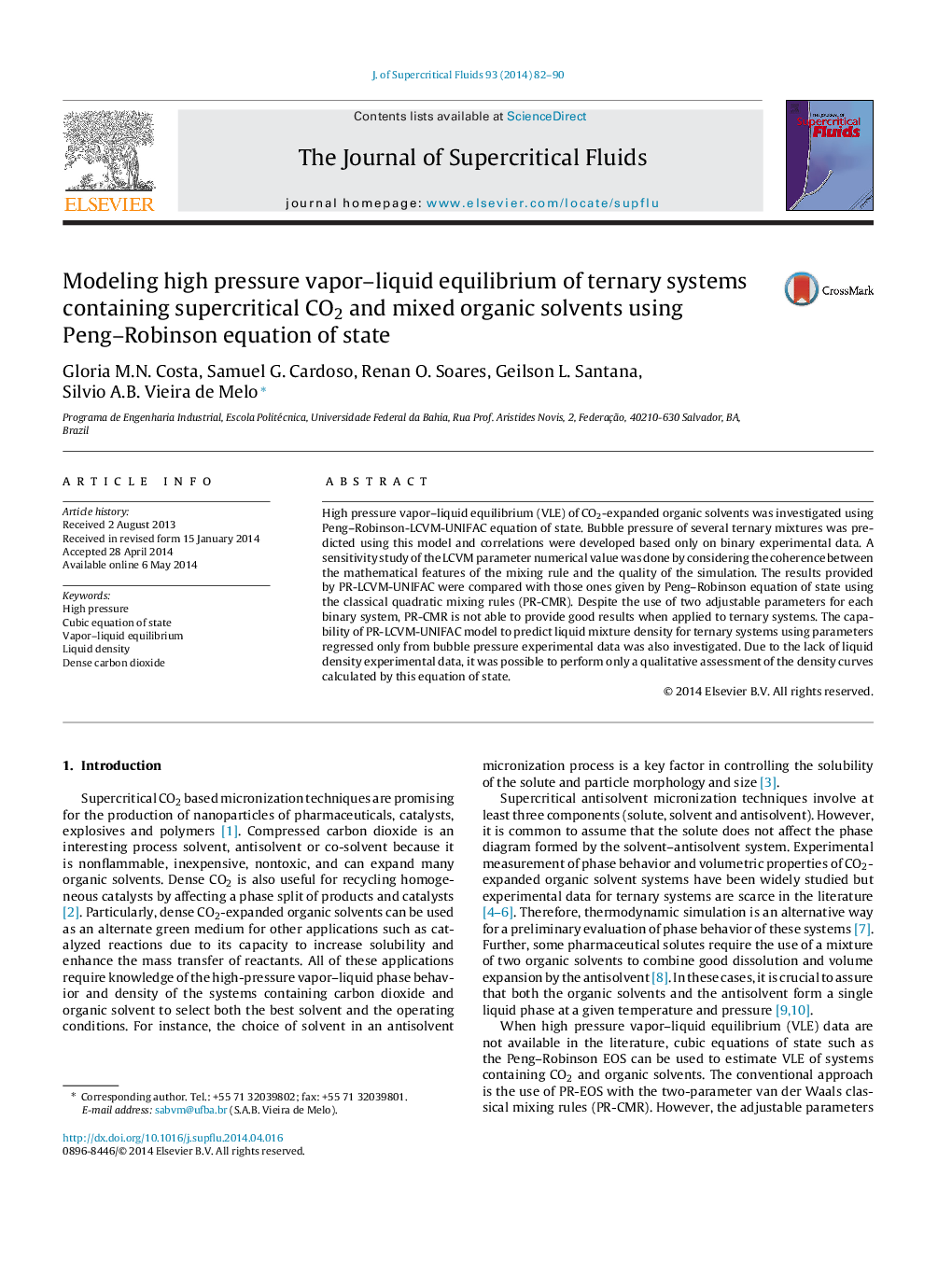| Article ID | Journal | Published Year | Pages | File Type |
|---|---|---|---|---|
| 230426 | The Journal of Supercritical Fluids | 2014 | 9 Pages |
•High-pressure VLE of CO2-organic solvents was modeled using PR-LCVM-UNIFAC EOS.•A sensitivity study of the LCVM parameter λ was done.•PR-LCVM-UNIFAC was compared to Peng–Robinson EOS using the quadratic mixing rules.•PR-LCVM-UNIFAC was investigated to predict liquid density for ternary systems at high pressure.
High pressure vapor–liquid equilibrium (VLE) of CO2-expanded organic solvents was investigated using Peng–Robinson-LCVM-UNIFAC equation of state. Bubble pressure of several ternary mixtures was predicted using this model and correlations were developed based only on binary experimental data. A sensitivity study of the LCVM parameter numerical value was done by considering the coherence between the mathematical features of the mixing rule and the quality of the simulation. The results provided by PR-LCVM-UNIFAC were compared with those ones given by Peng–Robinson equation of state using the classical quadratic mixing rules (PR-CMR). Despite the use of two adjustable parameters for each binary system, PR-CMR is not able to provide good results when applied to ternary systems. The capability of PR-LCVM-UNIFAC model to predict liquid mixture density for ternary systems using parameters regressed only from bubble pressure experimental data was also investigated. Due to the lack of liquid density experimental data, it was possible to perform only a qualitative assessment of the density curves calculated by this equation of state.
Graphical abstractFigure optionsDownload full-size imageDownload as PowerPoint slide
